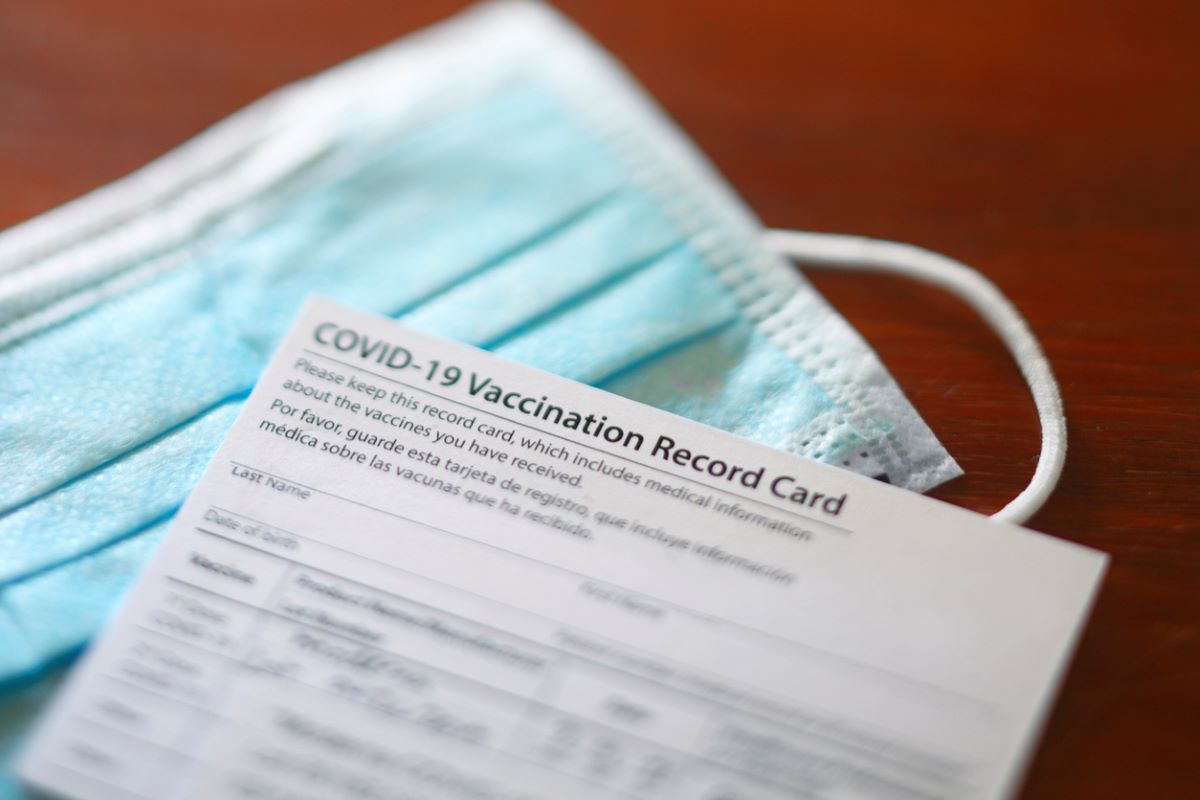OSHA puts into effect emergency temporary standard for workplace COVID-19 vaccination or testing requirements
Update: A court order has temporarily blocked the standard going into effect.

The U.S. Department of Labor’s Occupational Safety and Health Administration (OSHA) issued a COVID-19 vaccination and testing emergency temporary standard (ETS) for employers with 100 or more employees. Under the standard, employers must create, implement and enforce a mandatory COVID-19 vaccination policy or adopt a policy requiring employees either become vaccinated or undergo regular testing and wear a face covering if not vaccinated due to a reasonable accommodation. OSHA defines three reasonable accommodations categories: Those for whom receiving a vaccine may be medically harmful; for whom a delay in becoming vaccinated is medically necessary; or who have a disability or religious beliefs, practices or observances that conflict with a vaccination requirement as protected under federal civil rights laws.
Additionally, the vaccination status of each employee must be checked by obtaining acceptable proof from those who are vaccinated, and records and a roster of each employee’s vaccination status must be maintained.
The standard defines the 100-employee threshold to include part-time employees, but not independent contractors, and should be done at the firm- or corporate-wide level, not by individual location. Employers are required to provide paid time (up to four hours), separate from an employee’s accrued sick or vacation leave, for workers receiving a vaccination. Paid leave for the recovery from any vaccination side effects also is required, though employers may set a reasonable cap on the amount of paid sick leave available.
If implementing a policy of COVID-19 testing and face coverings at work for unvaccinated employees, employers are not required by the ETS to pay for testing or for face coverings. Any employee who does test positive for COVID-19 must be removed from the workplace, regardless of vaccination status, until they meet required return criteria.
“The publication of OSHA’s Emergency Temporary Standard helps diminish uncertainty around the rules on employer mandates, and this will help employers make decisions and move forward,” says Jeff Levin-Scherz, MD, Population Health Leader, Willis Towers Watson. “Employers have the ability to offer weekly testing as an alternative for those who are not vaccinated, but this will likely require more administrative efforts than requiring vaccines. Increased access to free or very inexpensive antigen tests will be especially important as employers are not required to pay for the cost of testing.”
Other notable elements from OSHA’s ETS include:
- Employees working from home count but not for actual vaccination or testing policies. According to OSHA’s frequently asked questions page for the ETS, “If an employer has 150 employees, 100 of whom work from their homes full-time and 50 of whom work in the office at least part of the time, the employer would be in the scope of this ETS because it has more than 100 employees. However, the standard’s requirements would only apply to the 50 employees who work in the office at least part time around other individuals, and not to those 100 employees working exclusively from their homes.”
- A fluctuating staff size around 100 employees will still likely require compliance. The only exception is if an employer has fewer than 100 employees on the effective date, Nov. 5, 2021, of the standard. If an employer subsequently hires and hits the 100-employee threshold, they are expected to comply with the ETS requirements. An employer with more than 100 employees who drops below that minimum needs to remain compliant.
- Weekly testing required for unvaccinated employees in the workplace. Each worker who is not fully vaccinated and is in the workplace at least once a week needs to be tested for COVID-19 at least weekly or within seven days before returning to work if the employee is away from a workplace for a week or longer. While employers are not required to pay for testing under the ETS, other laws, regulations, collectively negotiated agreements or collective bargain agreements may supersede the standard on this point.
- Required employee records and vaccination status roster are considered employee medical records. While individual records and roster should be confidentially maintained, an employer must make available an aggregate number of fully vaccinated employees at a workplace along with the workplace’s total number of employees to an employee or employee representative upon request. Note, tracking booster shots and any additional doses is not necessary for records.
- An employer’s existing vaccination policy can still hold if it satisfies all requirements of the ETS. An employer only needs to address the testing and face covering requirements of the standard if they have both vaccinated and unvaccinated employees. Any new or updated policies must be provided to all employees through an employers’ normal methods of distribution, but do not need to be submitted to OSHA unless directly requested.
OSHA provides additional resources on its website, including a webinar, fact sheets and sample policy language. This ETS is effective upon its publication in the Federal Register, giving employers 30 days to become compliant with most requirements and 60 days for implementing the testing requirements. However, the 5th Circuit Court of Appeals based in New Orleans temporarily blocked it, and all this is now on hold as the OSHA standard is challenged in court by more than two dozen states, businesses, business groups and religious organizations. Federal law dictates that because challenges were filed in multiple circuit courts the cases be consolidated and heard by one federal appeals court as chosen by lottery. According to the U.S. Department of Justice, that lottery could take place on or around Nov. 16, 2021.
“It’s likely that the court challenges will take a number of weeks to be resolved,” Levin-Scherz, says. “Employers should continue their preparation for compliance in case the Emergency Temporary Standard is allowed to proceed. This includes developing the infrastructure, policies and procedures to address requests for medical or religious exemptions in a compliant and nondiscriminatory manner and deciding whether to offer testing as an option to vaccination, and setting up the vendor contracts to put this into place.”
COMMENT
Ragan.com Daily Headlines
Tags: COVID-19, COVID-19 testing, mask requirements, OSHA, vaccine mandate






